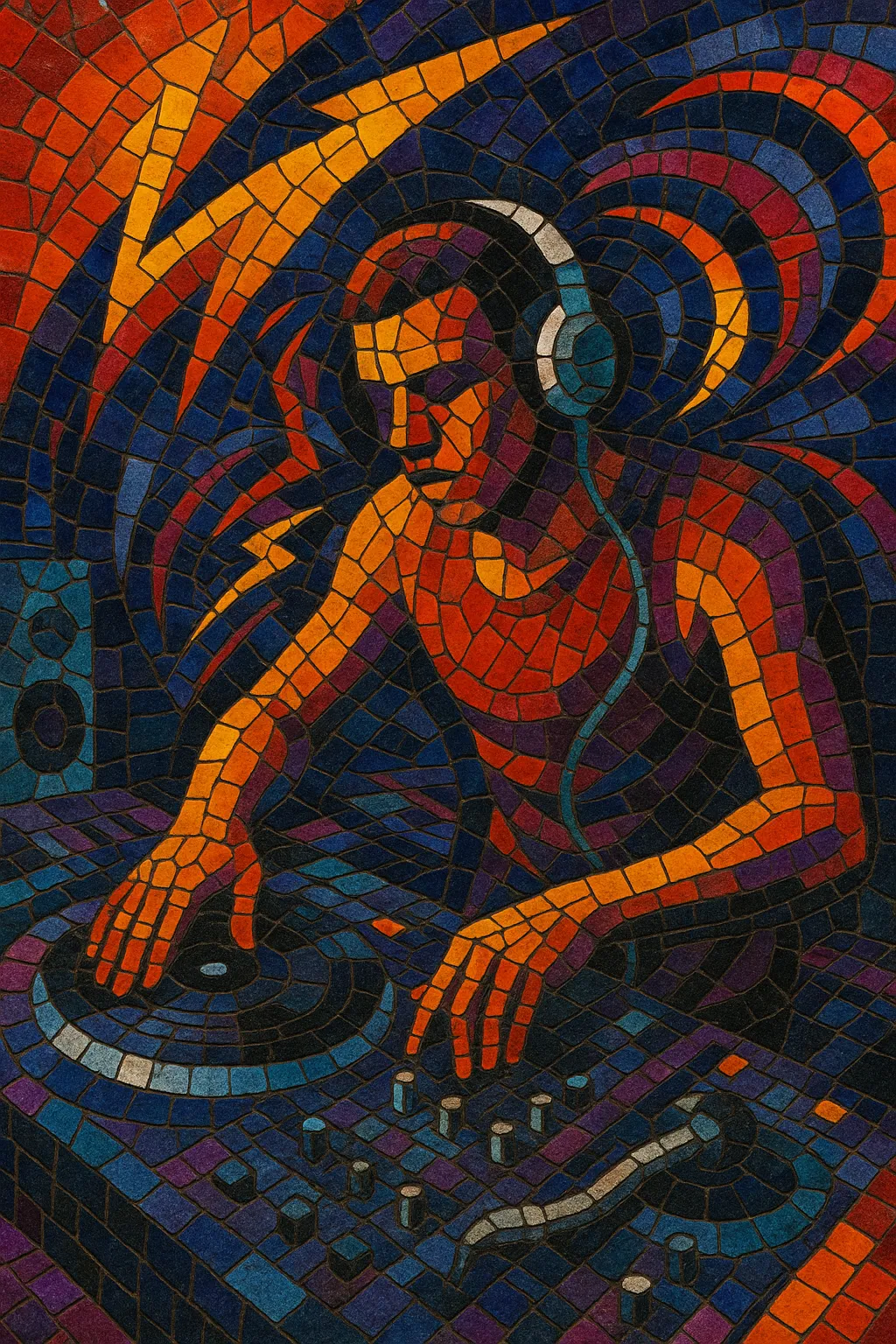Funkot (short for "Funky Kota") is a high‑tempo Indonesian club style that blends Euro rave energy with local dance rhythms. It is characterized by very fast BPMs (typically 160–180), constant four‑on‑the‑floor kicks, rolling snare/tom fills, bright supersaw leads, vocal chops, and dramatic risers.
The style borrows percussive swing and call‑and‑response energy from dangdut/koplo while using the sound design and arrangements of hard trance, happy hardcore, and Eurodance. In the 2010s it became a cult favorite in online communities and Japanese doujin/otaku circles, where producers applied the format to anime and game themes, further spreading the sound beyond Indonesia.
Funkot emerged in Indonesia’s urban club scenes (notably Jakarta and Medan) as local DJs fused the relentless drive of Eurodance, hard trance, and happy hardcore with the kinetic percussion and audience‑interaction ethos of dangdut/koplo. Producers pushed tempos well above mainstream EDM, favoring dense snare rolls, tom fills, and ear‑grabbing FX to keep dancefloors in constant motion.
By the late 2000s, a recognizable toolkit had formed: 160–180 BPM four‑on‑the‑floor kicks, offbeat open hats, sweeping risers, supersaw hooks, chopped vocals, and frequent “drum attack” fills. Bootlegs and unofficial remixes were common, with DJs repurposing pop, regional hits, and acapellas into high‑octane club tools.
In the 2010s, forums, file‑sharing, and YouTube accelerated the spread. Japanese doujin/otaku circles embraced funkot’s speed and excitement, applying the template to anime and game songs in club‑oriented edits. This cross‑pollination helped standardize certain arrangement tropes (big snare‑roll build‑ups, sudden breakdowns with vocal chops, and explosive drops) while keeping the percussive flair inspired by koplo.
Funkot remains an energetic, DIY‑driven club style. It continues to thrive through online communities, DJ edits, and regional parties, influencing how producers think about high‑tempo dance aesthetics and percussive showmanship in Southeast Asian nightlife.


